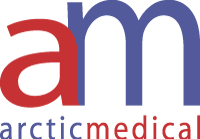|
Type 1 diabetes: diagnosis and management of type 1 diabetes in children and young people.
September 2004, updated, June 2009
Chapter 5 Complications and associated conditions
5.1 Hypoglycaemia
Children and young people with type 1 diabetes, their parents and other carers should be informed that they should always have access to an immediate source
of carbohydrate (glucose or sucrose) and blood glucose monitoring equipment for immediate confirmation and safe management of hypoglycaemia.
Children and young people, their parents, schoolteachers and other carers should be offered education about the recognition and management of hypoglycaemia.
Children and young people with type 1 diabetes should be encouraged to wear or carry something that identifies them as having type 1 diabetes (for example,
a bracelet).
Children and young people with mild to moderate hypoglycaemia should be treated as follows:
- Take immediate action.
- The first line of treatment should be the consumption of rapidly absorbed simple carbohydrate (for example, 10–20 g carbohydrate given by mouth).
- The simple carbohydrate should raise blood glucose levels within 5–15 minutes.
- Carbohydrate given in liquid form may be taken more easily.
- It may be appropriate to give small amounts of rapidly absorbed simple carbohydrate frequently because hypoglycaemia may cause vomiting,
- As symptoms improve or normoglycaemia is restored additional complex long acting carbohydrate should be given orally to maintain blood glucose levels
unless a snack or meal is imminent.
- Additional complex long-acting carbohydrate is not required for children and young people using continuous subcutaneous insulin infusion.
- Blood glucose levels should be rechecked within 15 minutes.
Comparison of 10 g oral glucose, 20 g oral glucose, 1.0 mg subcutaneous glucagon and placebo
An RCT compared administration of 10 g oral glucose, 20 g oral glucose, 1.0 mg subcutaneous glucagon
and placebo (n = 6 adults). Compared with placebo, 10 g oral glucose, 20 g oral glucose and 1.0 mg subcutaneous glucagon produced significant, but transient, increments in plasma glucose levels; 20 g oral glucose
treatment increased the plasma glucose to a significantly higher peak than 10 g oral glucose; 1.0 mg subcutaneous glucagon treatment increased the plasma glucose to a significantly higher peak than 10 g oral glucose
or 20 g oral glucose treatment.* [evidence level Ib]
A second RCT (n = 41 adults) compared the correction of blood glucose levels and clinical symptoms of
hypoglycaemia of seven orally administered carbohydrates (glucose solution, glucose tables, glucose gel, sucrose solution, sucrose tablets, hydrolysed polysaccharide solution and orange juice). All carbohydrate
types led to raised mean blood glucose levels after 20 minutes compared with baseline; there was some concern that glucose gel and orange juice did not increase plasma glucose as much as the other carbohydrate
sources.** [evidence level Ib]
* Wiethop BV, Cryer PE. Alanine and terbutaline in treatment of hypoglycemia in IDDM. Diabetes Care 1993;16:1131–6.
** Slama G, Traynard PY, Desplanque N, Pudar H, Dhunputh I, Letanoux M, et al. The search for an optimized treatment of hypoglycemia: carbohydrates in tablets, solution, or gel for the correction of insulin reactions. Archives of Internal Medicine 1990;150:589–93.
|
